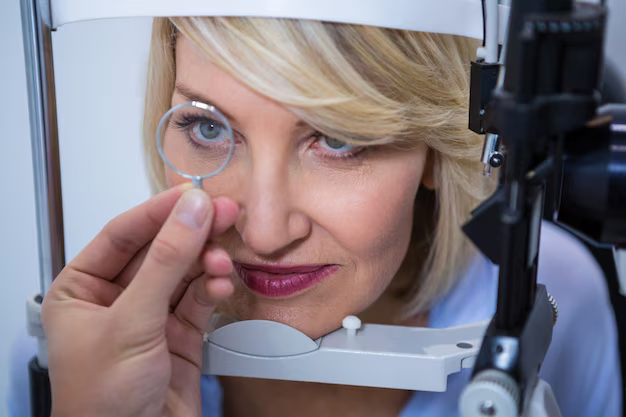Eyeing the Road: When Can You Drive After Cataract Surgery?
Cataract surgery is one of the most common and successful eye surgeries performed today. This procedure can significantly enhance your vision, potentially giving you a newfound clarity on life and the world around you. However, if you're planning to get behind the wheel post-surgery, you might be wondering, "When is it safe to drive again?" This is a question many face as they navigate their recovery. Let's explore this topic comprehensively and address common concerns related to driving following cataract surgery.
🏥 Understanding Cataract Surgery
What Is Cataract Surgery?
Cataracts cloud the lens of your eye, obstructing vision and making everyday activities challenging. Cataract surgery involves removing the cloudy lens and replacing it with a clear artificial lens. This relatively quick outpatient procedure has become routine, with most patients experiencing significantly improved vision shortly after.
Post-Surgery Recovery Timeline
After surgery, your eye needs time to heal. Vision improvements can appear within a day, but eyes are often sensitive and require rest. Understanding this recovery timeline is crucial in determining when you can comfortably resume daily activities like driving.
🚗 Driving After Cataract Surgery: What You Need to Know
Immediate Postoperative Period
Immediately following cataract surgery, you'll be in no condition to drive yourself home. Your vision will likely be blurry, compounded by effects from sedation or dilation. It’s imperative to arrange for someone to drive you home while you begin your recovery.
Vision Assessment Before Driving
Most eye care professionals:
- Recommend not driving for at least 24 hours post-surgery.
- Suggest waiting until your follow-up appointment to get a clearer perspective on how your eyes are healing.
Your eye surgeon will assess your vision and give you the green light when it’s safe to get back behind the wheel. This typically happens within a few days, but in some cases, it might take longer depending on individual recovery.
Signs You're Ready to Drive
Vision is a personal experience and recovery differs from person to person. Here are some signs indicating that you might be ready to drive:
- Clear, unclouded vision.
- Minimal light sensitivity.
- Ability to read traffic signs and signals without issues.
- Comfort in evaluating distances accurately.
🏠 Making Your Home Drive-Safe
While waiting to drive, consider adapting your home environment to make life easier:
- Adjust Lighting: Ensure your home is well-lit to navigate comfortably.
- Avoid Strain: Limit exposure to screens and activities that require intense focus during early recovery.
- Create Safe Paths: Arrange furniture to avoid tripping hazards and increase accessibility.
🕶️ Post-Surgery Eye Care Tips
Maintaining eye health is crucial. Here are some tips to protect your eyesight post-surgery and enhance recovery:
- Wear Sunglasses: Protect against UV rays and glare.
- Avoid Rubbing Eyes: Prevent irritation and possible complications.
- Use Prescribed Eye Drops: Follow medical instructions for eye drops to prevent infection and ensure proper healing.
🤓 Adapting to Changes in Vision
Postoperative vision may feel different, requiring some adaptation:
- New Glasses: You might need new prescriptions for reading or distance vision.
- Shifts in Depth Perception: Adjust to changes in how you perceive depth and distances.
- Increased Brightness Sensitivity: Light sensitivity is common, especially in bright or direct sunlight.
👀 FAQs About Driving and Cataract Surgery
Can I Drive at Night After Surgery?
Initially, night driving might be challenging due to glare from lights. If night vision isn't clear, it's safest to avoid driving at these times until adjustments are made or vision improves post-healing.
How Soon Can I Resume Regular Activities?
Beyond driving, many are eager to return to all daily activities. Typically, activities requiring intense focus or exposure to potential eye irritants, such as swimming, should be deferred according to medical advice.
What If Only One Eye Is Treated?
If one eye is treated, you might feel capable sooner due to relying on the untreated eye for some activities. Nonetheless, it's crucial to adhere to medical recommendations and prioritize eye health over convenience.
Are There Legal Implications?
In many regions, legal driving standards require meeting specific vision criteria. Post-surgery, if your vision doesn't meet these standards, returning to driving could lead to legal issues. Always consult medical professionals for appropriate clearance.
✨ Key Takeaways: When Is It Safe to Drive Post-Surgery?
Here are quick tips to remember when considering driving after cataract surgery:
- 🚫 Do not drive: Immediately after surgery until cleared by a doctor.
- 🕶️ Protect your eyes: With sunglasses and by following prescribed post-operative care.
- 🧑⚕️ Consult your doctor: To ensure your vision meets legal and safety standards.
- 🕰️ Allow time: For eyes to adjust and heal; patience is key to recovery.
- 🎛️ Be cautious: While adapting to potential changes in depth perception or light sensitivity.
Preparing for Your Post-Surgery Journey
Transitioning back to driving and regular activities requires patience and caution. Listening to medical advice and allowing your eyes to fully recover ensures not only your safety but also preserves the quality of your enhanced vision.
Remember, the road to recovery is a journey, not a race. Prioritize your health and adhere to guidelines for a smooth return to the driver's seat. By doing so, you’ll be back to enjoying the world with clarity and confidence, one drive at a time. 🛣️
